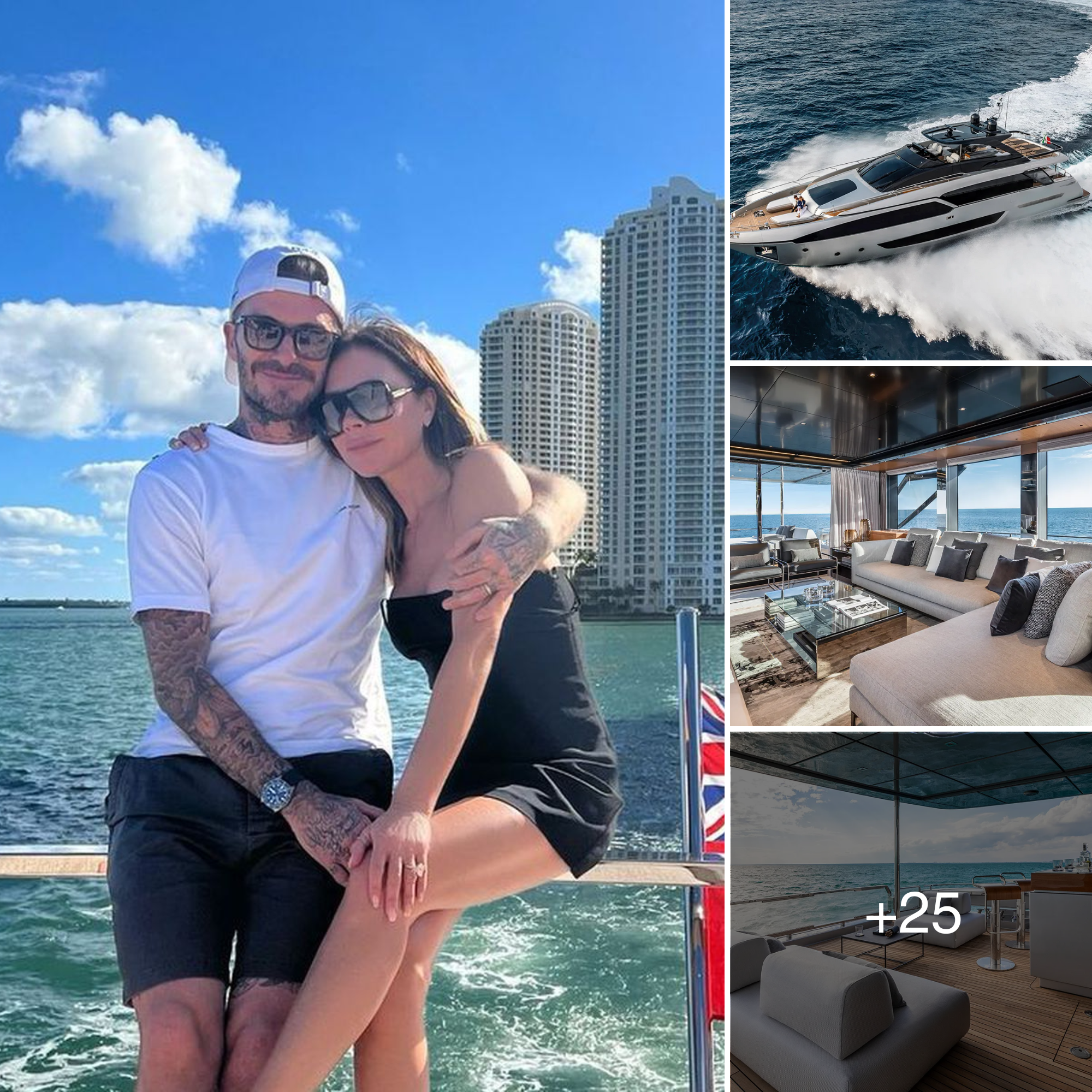
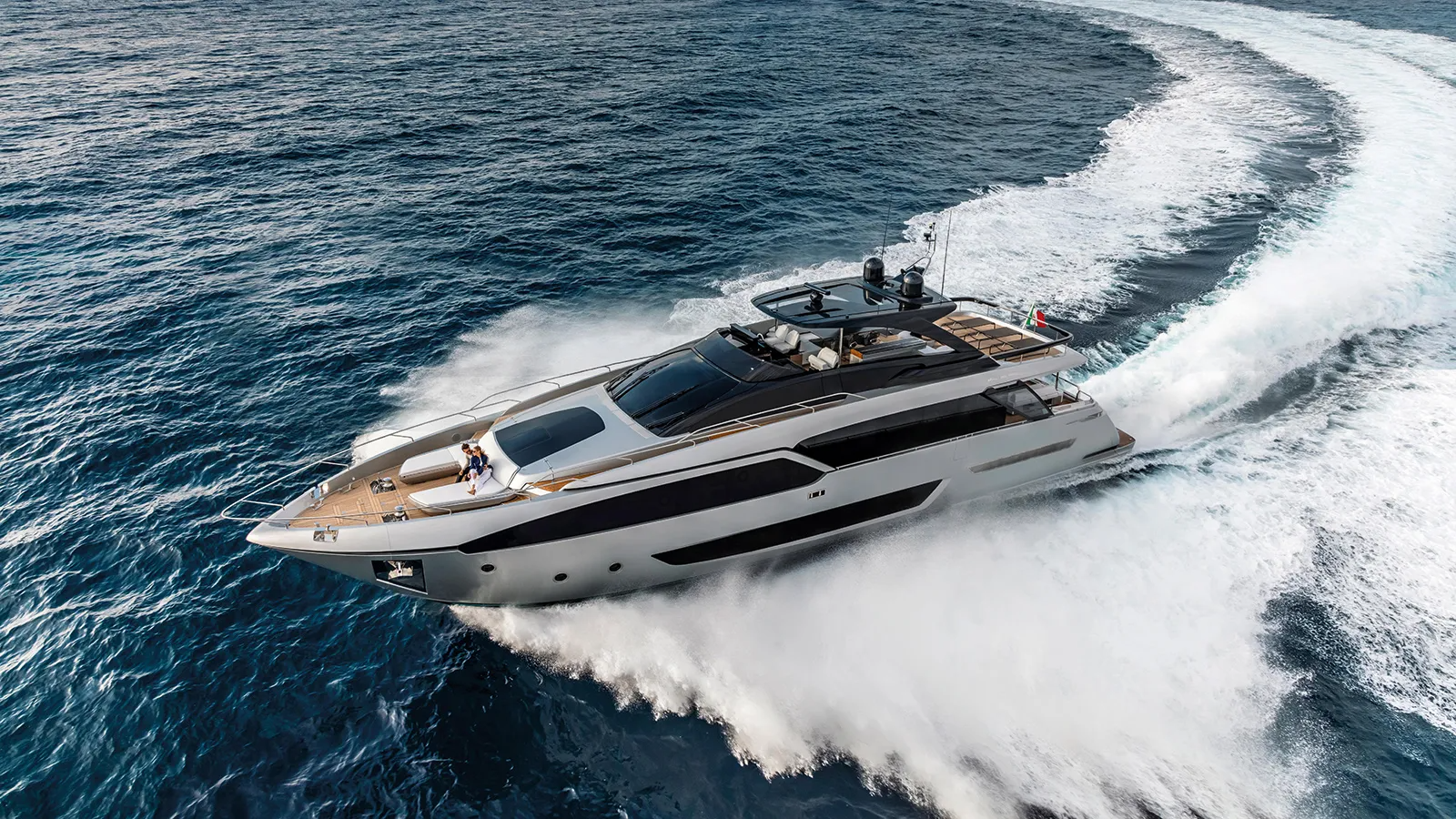
One needs to get a bird’s-eye view of any Riva, including the brand new Riva 90′ Argo, to gain a complete appreciation for these boats. This is how the ship’s designer, Mauro Micheli, envisions it, and the drawing of the ship from the perspective of a helicopter was the first one he showed the shipyard. If you were to look at the new Riva from that vantage point, one of the features that you would notice is that the enormous glass panel that is put into the hardtop has an asymmetrical shape. This single piece, as well, is “quite pricey,” as stated by Stefano de Vivo, chief commercial officer of the Ferretti Group.
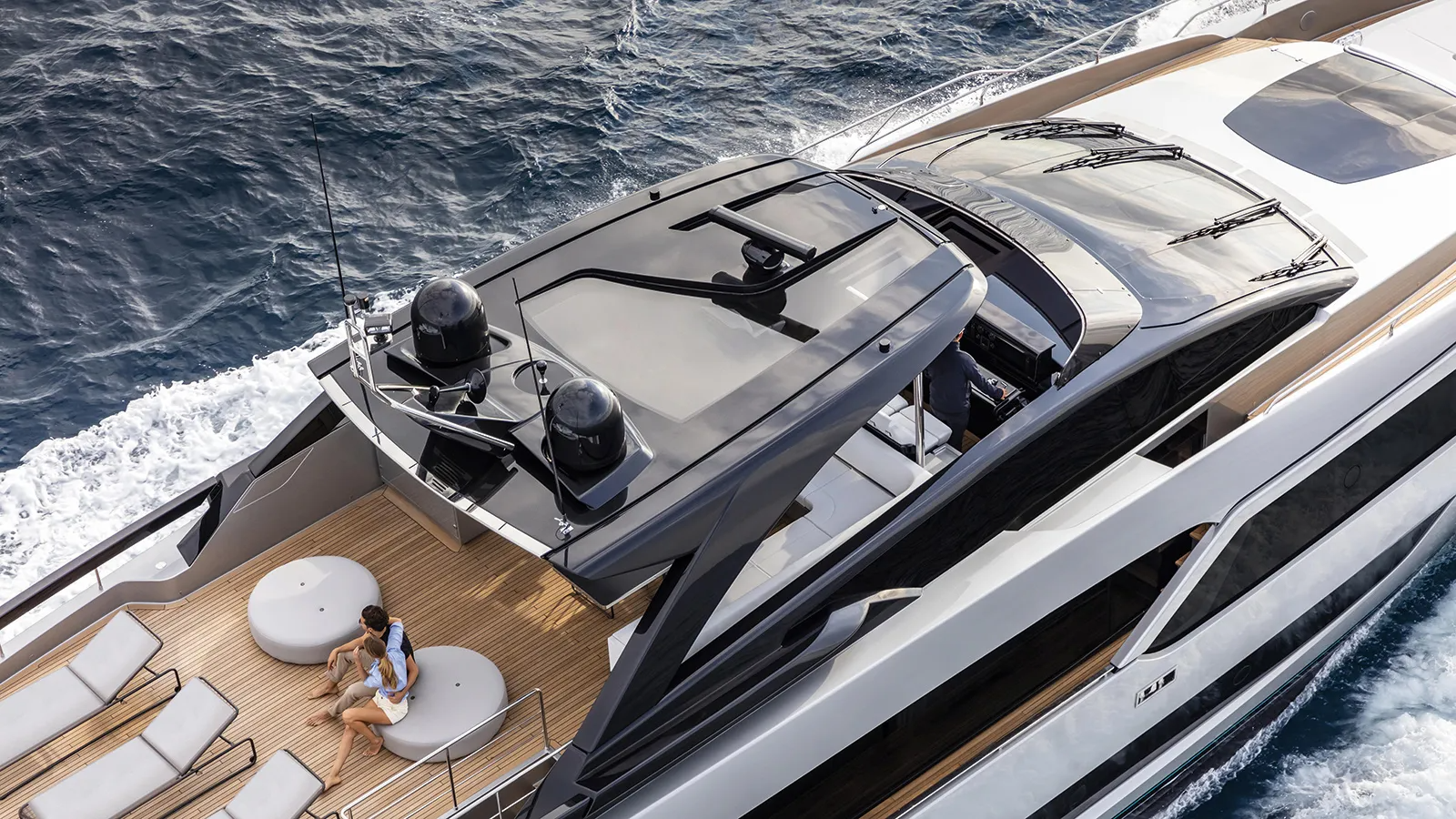
The Riva hardtop’s asymmetrical glass insert is reminiscent of abstract art
Sergio Beretta, who along with Micheli established Officina Italiana Design, compares the work to an abstract design. “It’s like an abstract design,” he says. According to him, “Our primary passion is contemporary art, and so we wanted to give something special, something more contemporary for this boat,” and that’s how they came across this asymmetric cut glass. It is located within the hardtop that protects a significant portion of the 46-square-meter bridge, which is one of the major features of this sophisticated yacht that is less than 30 meters long. This asymmetric top has already been seen on the larger sistership of the Argo, which is called the Riva Dolcevita and measures 33.5 meters.
The Argo is the third and smallest of Riva’s new-generation flybridge yachts at 28.5 meters in length; yet, as Micheli puts it, “it’s a strong design.” The name “Argo” was taken from the Greek myth of the Argonauts and the Golden Fleece.
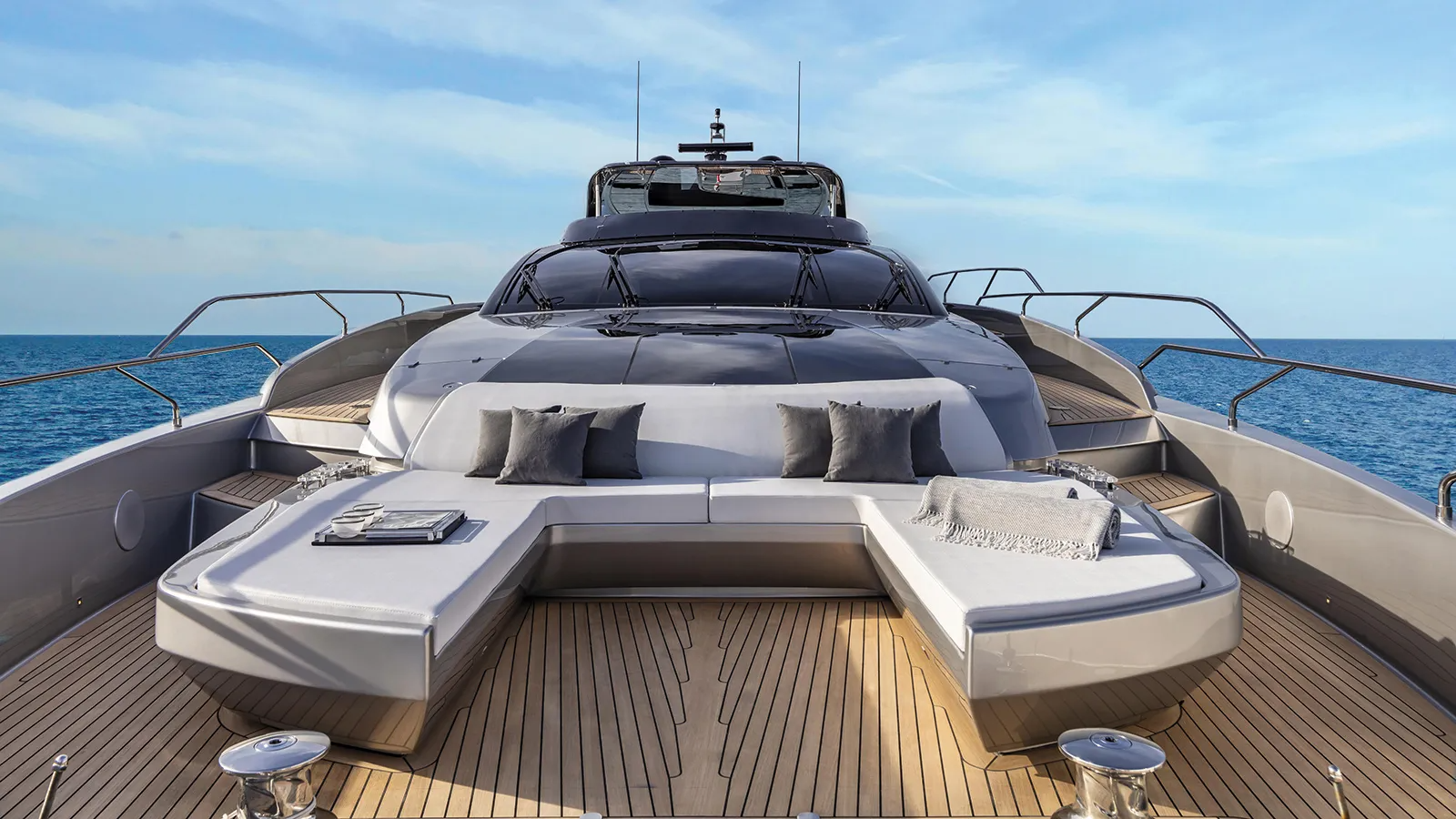
The views from the top
Beretta states, “We believe we achieved a very good balance between the spaces and the style.” “The 90 followed the 100 [Corsaro] and 110 [Dolcevita] in experience. It was advantageous for this project that we were able to incorporate all the positive feedback and features discovered for the two previous models. This experience was extremely beneficial to us.” Many features are effectively replicated on a smaller scale, such as the saloon and its large windows. To create the effect that the shipyard has dubbed the “crystal palace,” that is, a space surrounded by glass, posed a formidable engineering obstacle. The rear section of the saloon is almost entirely made of glass, with no substantial support or column to obscure the view. The objective is to provide a view into infinity.
On the larger Dolcevita, the shipyard constructed a steel framework to support the substantial quantity of glass. On the Argo, the shipyard utilized a carbon fiber frame, but the result is identical and quite impressive. It is, according to de Vivo, “a spacious lounge that spans nearly 40 square meters and reaches heights of over 2.1 meters.” It is separated into a seating area and a dining area by low-lying furniture. Behind a solid door is a corridor leading to the private owner’s suite on the opposite side of the galley.

The “crystal palace”-nicknamed the main saloon has a dark lacquered ceiling for contrast
It was in Florida, first in Miami and then in Palm Beach, that Riva had the global premiere of the first Argo, which had been constructed at the shipyard it owned in La Spezia. On the main deck, there is a bar that is located directly outside the saloon doors. “I think in this area of the world [North America], people like to entertain a lot more with bars outside,” adds de Vivo. “It’s just a different culture.” It features two sofas and a coffee table designed by Paola Lenti as part of the package.
Officina Italiana Design, on the other hand, has chosen to keep all of the deck furnishings on the European version at a fairly modest level. The view from inside is not obstructed in any way by a pair of sofas that are placed on either side of a high-low table that has the ability to split into two separate parts. The owners have the option of selecting either layout, depending on their personal preference.
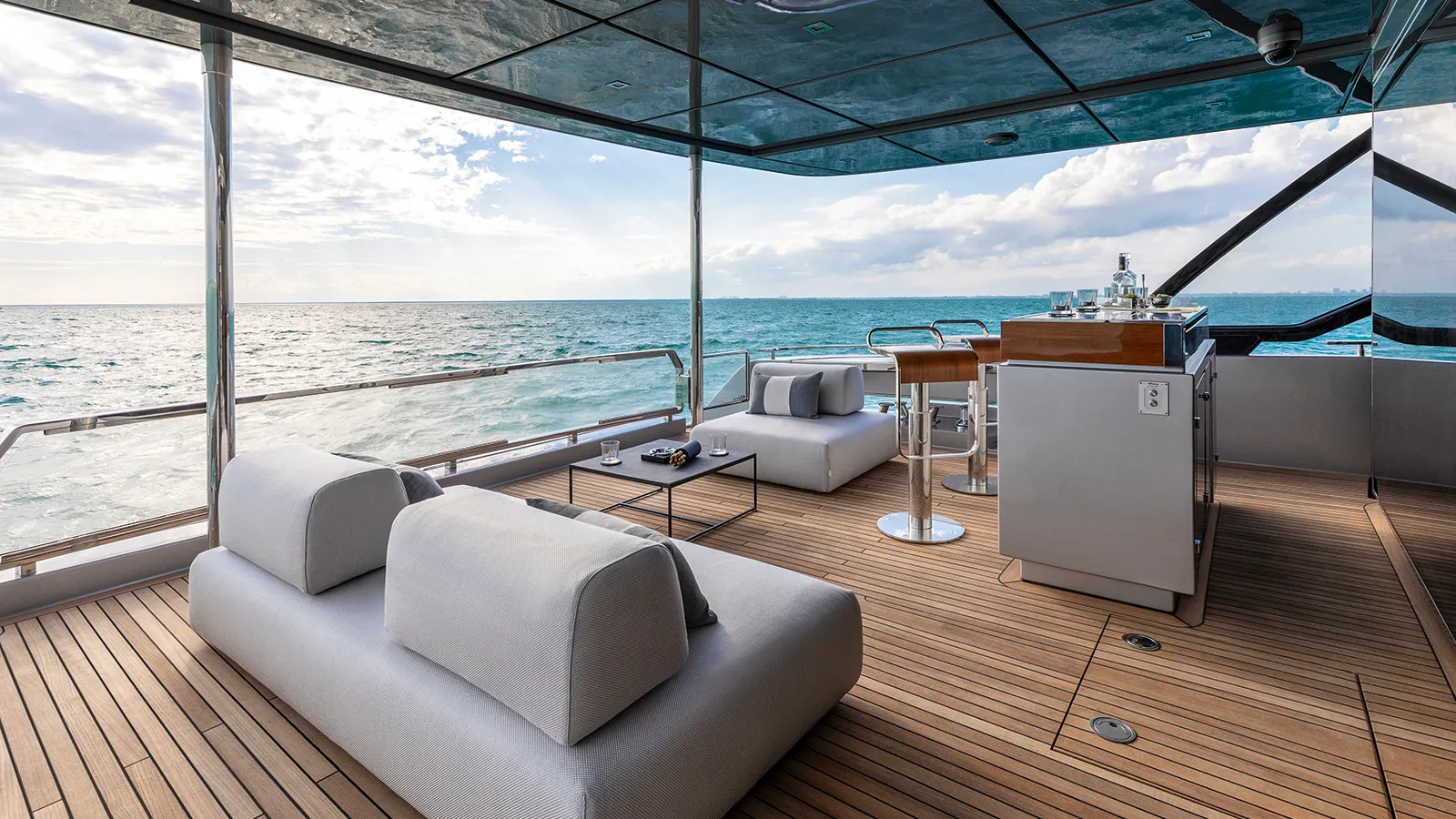
For outdoor entertaining, the ‘American’ version of the aft deck incorporates a wet bar
Making a shorter yacht with a full body forward appear as sleek as feasible was one of the design challenges of the Argo. During the day, when the sun reflects off the surface, the dark glass bands make the boat appear slimmer. At night, when the interior lights are on, the effect is markedly different, and the sheer amount of glass becomes evident. If placed end-to-end, the panes would encompass over 80 square meters. Simply because the brain interprets the surfaces differently, the same boat appears larger when light is streaming through the windows.
Micheli’s approach to design is emotional and instinctual, and he considers each design holistically, akin to a sculpture, with no poor angles. From the bow of the Argo gazing aft, only fleeting lines hint at the black-painted flybridge and its hardtop. He claims that the exterior, particularly “the surface,” is influenced by automotive design. The yacht, which is capable of 30 knots with the larger engine option (MTU 16V 2000 M96), has the posture of a sports car when viewed from this angle.
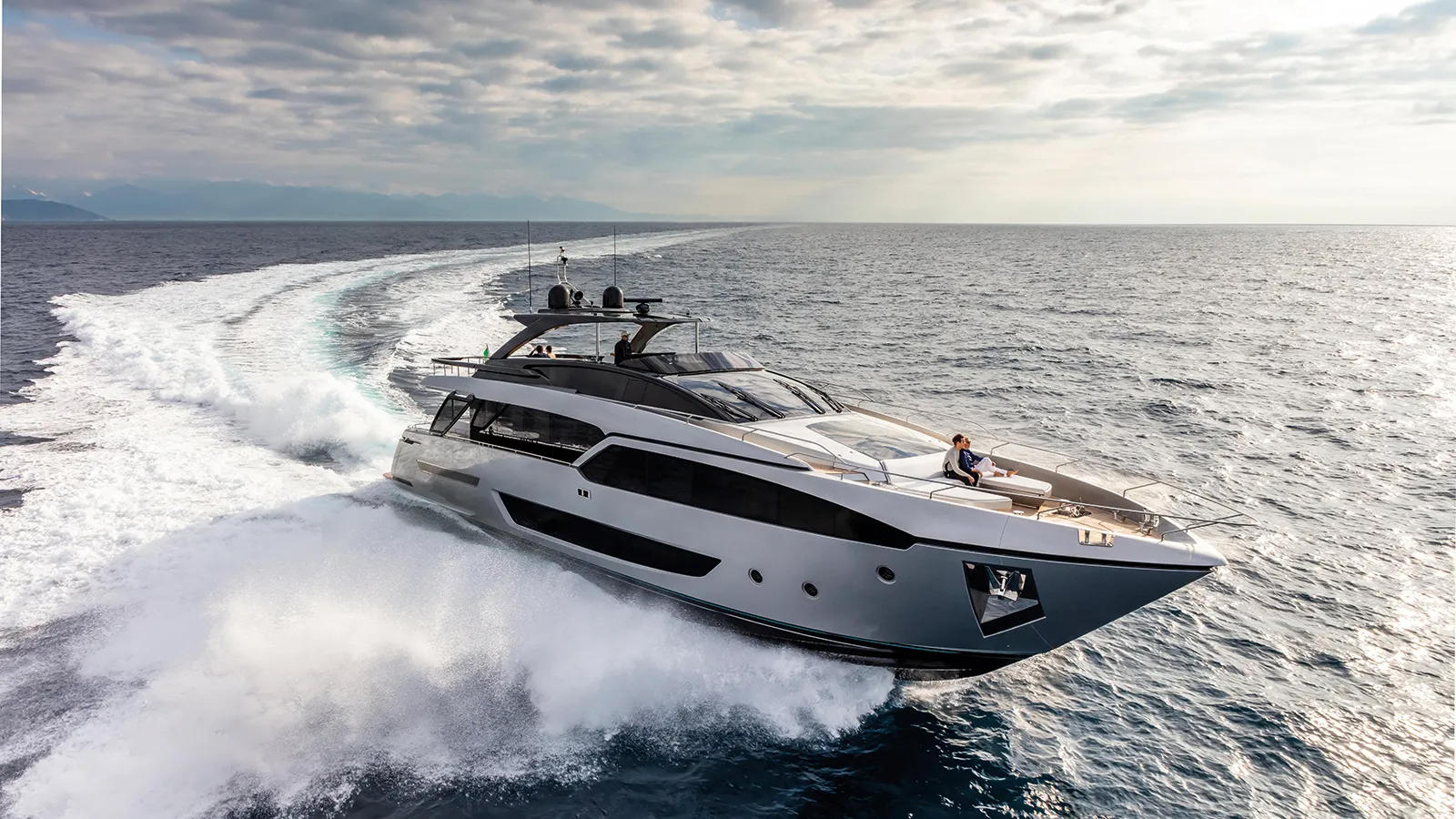
The Riva Argo 90’s exterior features elegant lines
Officina Italiana Design has contributed to the Riva narrative for over 25 years. The 13-meter Rivarama 44, a rakish dayboat with one cabin, was one of the first larger vessels the firm designed for Riva. As Beretta recalls, the builder’s technical department did not quite grasp the concept at the time. They thought it was insane to build a 13-meter yacht with only one compartment, he says, but they sold 130 of them in ten years.
This argument has allowed the design firm to maintain a great deal of creative license in its collaboration with Riva. “We are indebted to the shipyard. They always attempt to produce what we design; we are fortunate in this regard. Some designers we know would like to be more creative, but they are limited by what the yard can and will produce,” says Beretta. Their design ethos permeates Riva’s genetic makeup.

From the foredeck lounge, the 46 m2 flybridge is scarcely visible
“Good design must be durable as a sign of respect for our work as well as our consumers. They do not merit a vessel that will be out of style within two years. Because you cannot exist in the past, we are classical, albeit with a contemporary twist.”
This ideology extends to the interior. Officina Italiana Design collaborates closely with the yard’s interior design department on all aspects of materials, colors, and furnishings, and creates timeless interiors.
Although they have not yet designed their own furniture, they have a number of go-to, Italian-brand favorites. Minotti is one, but they enjoy variety. Acerbis, a small company located close to their residence in Bergamo, is a second favored furniture manufacturer.

The full-beam suite on the lower deck is the most secure location on board
“The basic materials we use for all Rivas are wood, leather, and stainless steel because we believe they are a part of the history,” Beretta says. Then, new materials are added, as no one desires to remain in the past. On the Argo, stainless steel is widely employed in strategic ways that visually expand space and reflect light. The ceilings and bulkheads are dark lacquer and English walnut, respectively.
“Because this boat is so light, we decided on a darker interior, which provides comfort,” says Micheli. In the bathroom, white leather with stitched borders and Calacatta marble temper the darker hues.
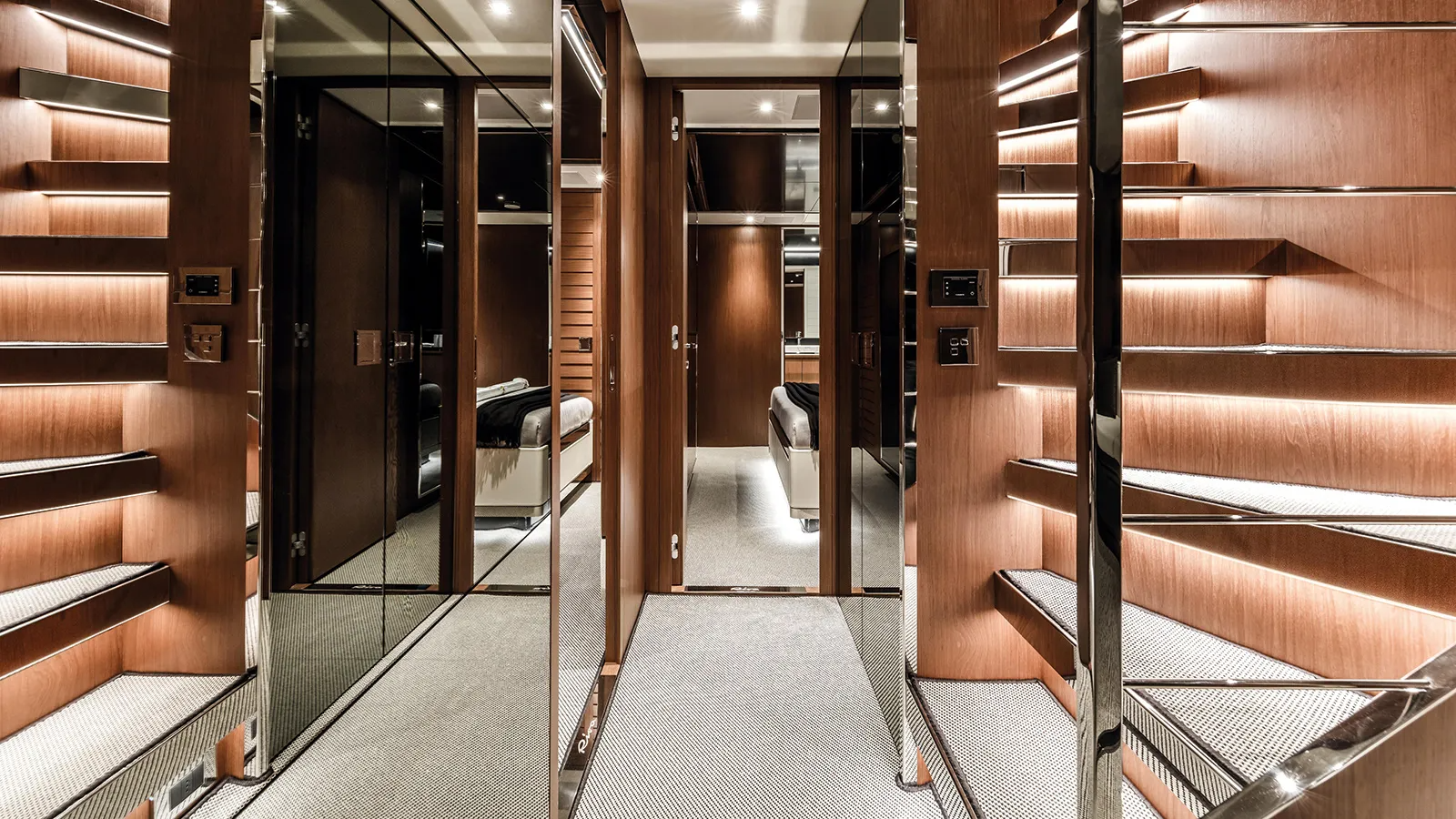
The walnut bulkheads on the lower deck provide visual comfort in the interior’s light environment
Considered a gateway to the superyacht-size yachts Riva now builds, the Argo has two crew cabins and a small mess that is connected to the galley on the main deck. Despite similarities, it would be a mistake to see the Argo as a shrunken variant of the Dolcevita or Corsaro. The hull is a new design developed for this project and the Argo has been thought out through and through.
The shipyard decided on just three guest cabins. An especially large suite is amidships, which compares favorably with the 30-square-meter suite on the main deck. “Some owners prefer sleeping up top and some prefer being down below. So, we’re giving them the best of two worlds with what amounts to two master cabins, plus another two en-suite cabins,” de Vivo says.
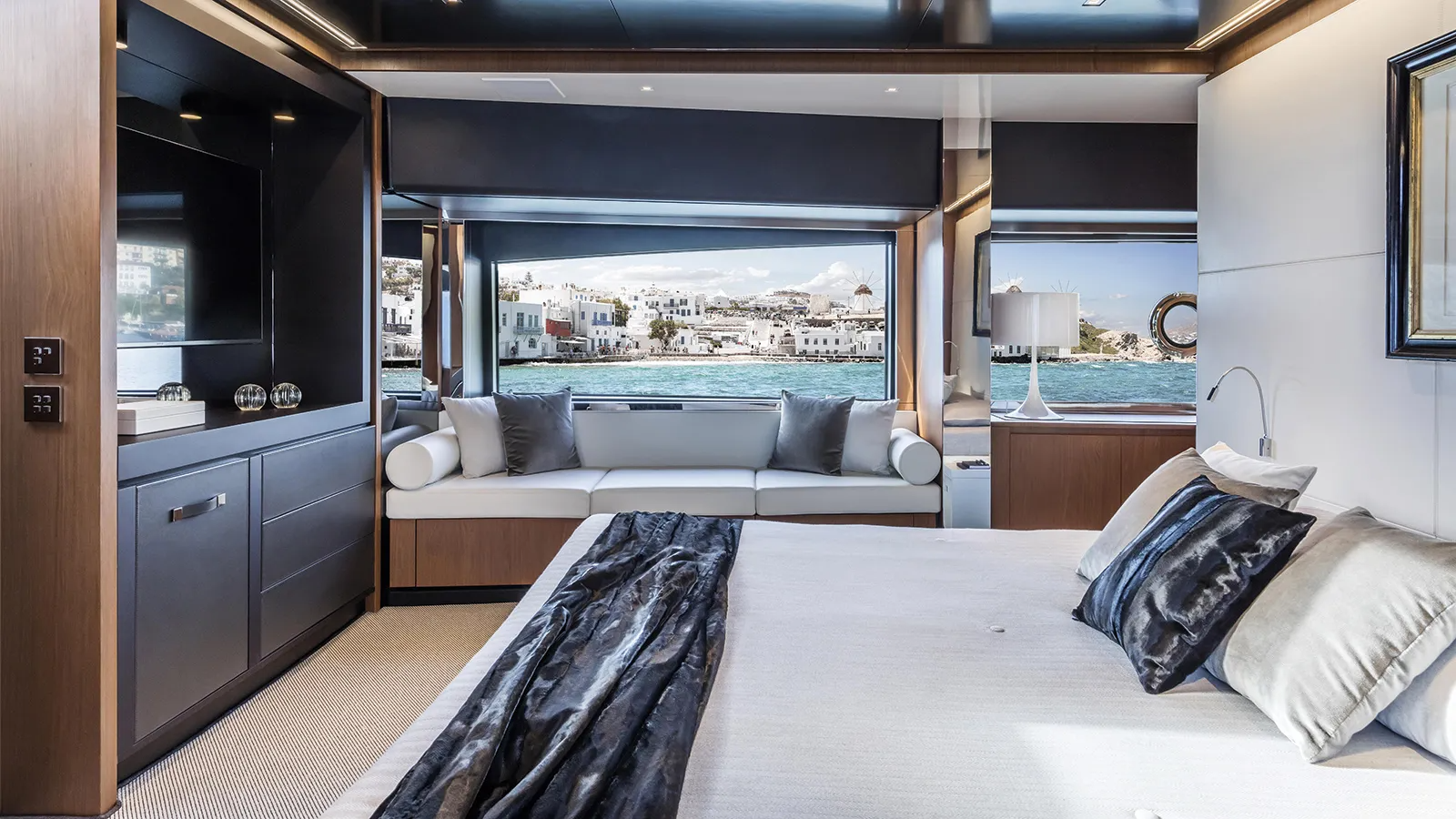
On board the Riva 90 Argo, the owner’s suite
The Argo also has a great flow. A very nice feature is how interconnected the spaces are. It is possible, for instance, to walk directly from the flybridge to the bow area, which is simply organized with a couch in the shape of a C. “In [the US], people use this area a lot more,” de Vivo observes.
The flybridge is one of the yacht’s great assets. The bar top is automated and opens at a touch of a button to reveal an outdoor galley just across from the dining table. The crowning achievement, however, may be the magnificent seats that face the console. Set atop a sculptural pedestal with a stainless-steel finish, they provide fantastic views over the bow and the sensation of flight at higher speed. So yes, there are compelling reasons to look at the Argo from the top or, really, any angle.